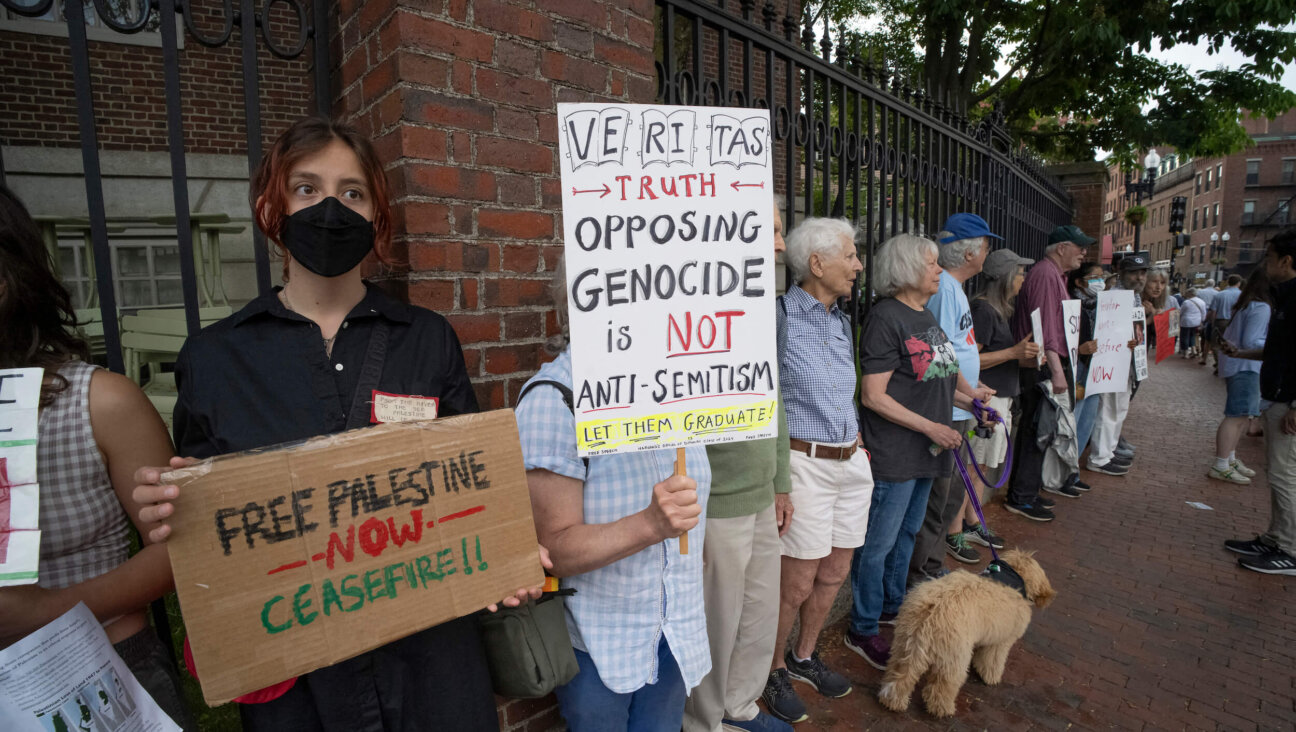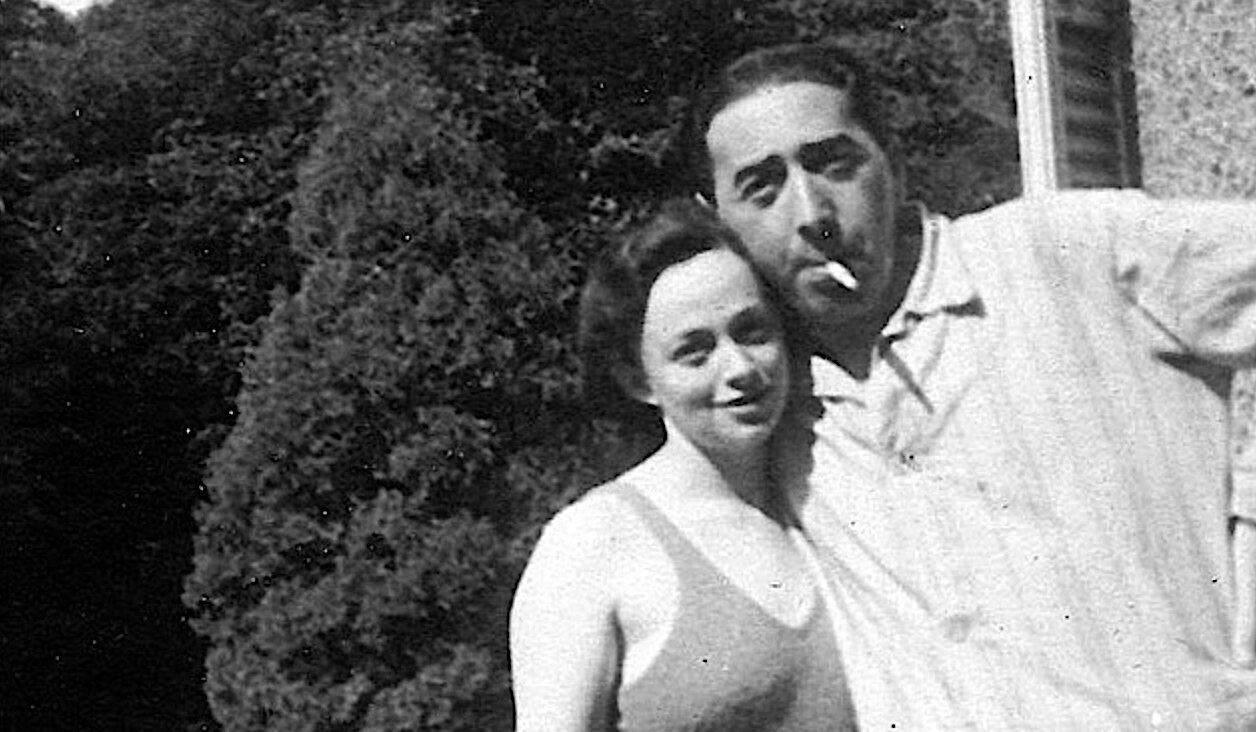My Forefathers Were Yurt-Dwelling Siberians
The thorny issue of just who belongs to the Chosen People is, in my opinion, likely to remain unresolved forever, or at least until the Messiah arrives with the answer. And to be honest, that’s just fine with me, since this whole issue doesn’t concern me directly. You see, I happen to boast an unassailable Jewish pedigree, so the question of “Who is Jew?” has no resonance for me, at least on a personal level.
There is, however, another question not entirely unrelated that could potentially render brittle my strictly kosher certification. For me, the real question isn’t “Who is a Jew,” but rather “Who is a Q?”
Let me explain.
Several years ago, I watched a “60 Minutes” segment on genetic genealogy research taking place at the University of Arizona and Technion in Haifa. In particular, investigators were studying the paternally inherited Y-chromosomes of Cohens, the Jewish high priestly class, and a designation passed down since antiquity from father to son. Cohens constitute about 5% of the world’s 12 million Jews.
What the investigators found was astounding: About half of all Cohens — across all Jewish backgrounds — possessed a distinct Y chromosome marker, or mutation, which traces their collective ancestry back in time to a single man that lived in the Middle East 3,000 years ago, or around the time that Aaron, brother of Moses and the first Cohen, was supposed to have existed. If true, such a finding could confirm the Torah tradition, which until now there was no way to prove. (Not that devout Jews would ever need any scientific confirmation for their beliefs.) The story was my introduction to the new field born of the marriage of biology with anthropology, the sweeping new world of genetic anthropology. More revelations on Jewish genealogy followed.
Research has shown that a major element of most contemporary Jewish populations worldwide were connected to ancient Middle Eastern Israelite populations, as well as that an ancient familial relationship existed between Jews and Eastern Mediterranean Arabs and that Jews were also closely related to Kurds in southeastern Turkey. This connection was especially intriguing, considering the Torah’s description of Abraham’s family ties to Haran, a city in Turkish Kurdistan.
Some time later I discovered National Geographic’s Genographic survey, whose mission to “map humanity’s genetic journey through the ages” would be accomplished by taking DNA samples of as many millions of people as they could, everywhere around the world. A simple swab taken from the inside of my cheek would, according to the survey, “reveal [my] deep ancestry along a single line of direct descent and show the migration paths they followed thousands of years ago. [My] results [would] also place [me] on a particular branch of the human family tree.”
It seemed I’d finally be able to certify my kosher pedigree linking myself inextricably to King David and the prophet Isaiah. And so it came to pass that I sent away for what may be, at $100, the world’s most expensive swab, which I then rubbed inside my cheek and returned to a lab in Texas.
My test results appeared on the Genographic Web site three months later. The result? This glatt Jew was a member of a certain Haplogroup Q.
Who, you might ask, is a Q?
Q, it turns out, is a branch of humanity that arose about 20,000 years ago with “a man born in the savagely cold climate of Siberia.” In other words, I am a direct descendant not of a swarthy Judahite shepherd or Galilean Bronze Age fig farmer, but of a burly yurt-dwelling Siberian sharing tundra turf with herds of still-extant mammoths.
The Siberian would have been justifiably proud of his progeny. His descendants wandered east through the ages, crossing the Bering Strait to become the first Native Americans. Some yikhus.
Now I may be an American native, but I’m certainly not Native American. So you ask, what am I to Q?
Well, America wasn’t the sole destination of the Siberian’s progeny. Some cousins headed to Scandinavia and others to the future Poland and Hungary. My father, as it so happens, was born outside Budapest.
So who, indeed, is a Q? While research is still ongoing, it is possible that Qs are descended from the Khazars, the mysterious Central Asian nation that converted to Judaism 1,200 years ago. Haplogroup Q would become one of the founding lineages of Ashkenazi Jewry, which emerged 1,000 years ago. So while several of these Ashkenazi lineages, such as Haplogroup J, link to ancient Israelites, mine does not.
Despite the revelation, I didn’t join a heritage tour to Tajikistan to recover my long lost history along the Caspian Sea. Likewise, I never felt a particular affinity for Hungary. My father may have been born in the Budapest metropolitan area, but he most certainly wasn’t Hungarian.
He was a Jew — and so am I.
No nation is genetically homogenous and Jews, a potent mix of Canaanite with a splash of Egyptian, never were.
So who is a Q? I am Q. Come to think of it, we are all Q.
Uzi Silber is a New York-based writer.
The Forward is free to read, but it isn’t free to produce

I hope you appreciated this article. Before you go, I’d like to ask you to please support the Forward.
At a time when other newsrooms are closing or cutting back, the Forward has removed its paywall and invested additional resources to report on the ground from Israel and around the U.S. on the impact of the war, rising antisemitism and polarized discourse.
Readers like you make it all possible. We’ve started our Passover Fundraising Drive, and we need 1,800 readers like you to step up to support the Forward by April 21. Members of the Forward board are even matching the first 1,000 gifts, up to $70,000.
This is a great time to support independent Jewish journalism, because every dollar goes twice as far.
— Rachel Fishman Feddersen, Publisher and CEO
2X match on all Passover gifts!
Most Popular
- 1

Film & TV What Gal Gadot has said about the Israeli-Palestinian conflict
- 2

News A Jewish Republican and Muslim Democrat are suddenly in a tight race for a special seat in Congress
- 3

Fast Forward The NCAA men’s Final Four has 3 Jewish coaches
- 4

Culture How two Jewish names — Kohen and Mira — are dividing red and blue states
In Case You Missed It
-

Fast Forward ‘Another Jewish warrior’: Fine wins special election for U.S. House seat
-

Fast Forward Cory Booker proclaims, ‘Hineni’ — I am here — 19 hours into anti-Trump Senate speech
-

Opinion In Trump’s war against campus antisemitism, hate the tactics but don’t ignore the problem
-

Yiddish כ׳בענק נאָך די וועלטלעכע ייִדן וואָס האָבן אָפּגעריכט אַ טראַדיציאָנעלן סדר Longing for those secular Jews who led a traditional seder
מײַן פֿעטער יונה האָט נישט געהיט שבת און כּשרות אָבער בײַם אָפּריכטן דעם סדר האָט ער געקלונגען ווי אַ פֿרומער ייִד
-
Shop the Forward Store
100% of profits support our journalism
Republish This Story
Please read before republishing
We’re happy to make this story available to republish for free, unless it originated with JTA, Haaretz or another publication (as indicated on the article) and as long as you follow our guidelines.
You must comply with the following:
- Credit the Forward
- Retain our pixel
- Preserve our canonical link in Google search
- Add a noindex tag in Google search
See our full guidelines for more information, and this guide for detail about canonical URLs.
To republish, copy the HTML by clicking on the yellow button to the right; it includes our tracking pixel, all paragraph styles and hyperlinks, the author byline and credit to the Forward. It does not include images; to avoid copyright violations, you must add them manually, following our guidelines. Please email us at [email protected], subject line “republish,” with any questions or to let us know what stories you’re picking up.














